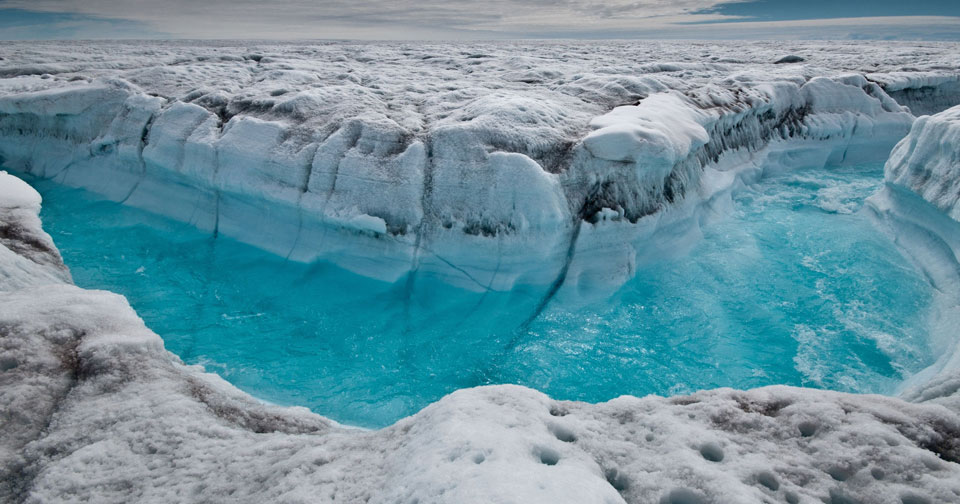
The first continuous, multi-century study of surface melt from the Greenland ice sheet was published in Nature Wednesday, and the results are clear: the ice sheet is now melting at rates unseen within at least the last 350 years.
“Melting of the Greenland Ice Sheet has gone into overdrive. As a result, Greenland melt is adding to sea level more than any time during the last three and a half centuries, if not thousands of years,” lead study author and Rowan University School of Earth & Environment glaciologist Luke Trusel said in a press release from the Woods Hole Oceanographic Institution (WHOI), one of the institutions involved in the research.
The researchers found that melting first increased on the ice sheet in the 1800s, when the Arctic began to warm as the process of industrialization started pumping greenhouse gasses into the atmosphere. However, it is only in recent decades that the melting has increased beyond the point of natural variability. There is now 50 percent more meltwater runoff entering the oceans from the sheet since the start of the industrial era, and 30 percent more since the 20th century.
“From a historical perspective, today’s melt rates are off the charts, and this study provides the evidence to prove this,” WHOI glaciologist and study author Sarah Das said.
The researchers were able to prove what many had sensed through observation by using a novel method, as the WHOI explained:
To determine how intensely Greenland ice has melted in past centuries, the research team used a drill the size of a traffic light pole to extract ice cores from the ice sheet itself and an adjacent coastal ice cap, at sites more than 6,000 feet above sea level. The scientists drilled at these elevations to ensure the cores would contain records of past melt intensity, allowing them to extend their records back into the 17th century. During warm summer days in Greenland, melting occurs across much of the ice sheet surface. At lower elevations, where melting is the most intense, meltwater runs off the ice sheet and contributes to sea level rise, but no record of the melt remains. At higher elevations, however, the summer meltwater quickly refreezes from contact with the below-freezing snowpack sitting underneath. This prevents it from escaping the ice sheet in the form of runoff. Instead, it forms distinct icy bands that stack up in layers of densely packed ice over time.
Using ice cores allowed the researchers to provide more historical context than the satellite data they had relied on up until now to judge melt rates, which only goes back to the 1970s.
“We have had a sense that there’s been a great deal of melting in recent decades, but we previously had no basis for comparison with melt rates going further back in time,” study author and MIT-WHOI graduate student Matt Osman said. “By sampling ice, we were able to extend the satellite data by a factor of 10 and get a clearer picture of just how extremely unusual melting has been in recent decades compared to the past.”
The research has troubling implications for future sea level rise, because it shows that the ice sheet isn’t melting at a steady rate. Instead, each degree of warming increases the amount of melting, meaning the more the planet warms, the more sensitive the ice sheet will be.
“Even a very small change in temperature caused an exponential increase in melting in recent years,” Das said. “So the ice sheet’s response to human-caused warming has been non-linear.”
Trusel summed up the implications: “Warming means more today than it did in the past,” he said.
The research is in keeping with estimates that global sea levels will rise by eight to 12 inches by 2050, but University of Lincoln climate scientist Edward Hanna, who was not involved with the study, told InsideClimateNews that sea level rise projections might have to be increased if Greenland keeps melting.
“We can’t rule out that the IPCC (Intergovernmental Panel on Climate Change) sea level rise scenarios are too conservative,” Hanna said. “Greenland is a bit like a sleeping giant that is awakening. Who knows how it will respond to a couple of more degrees of warming? It could lose a lot of mass very quickly.”
This article was reposted from EcoWatch.










